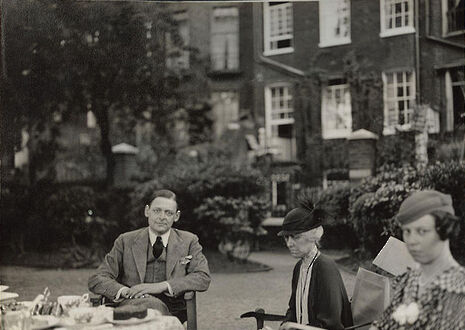Poems: The Ariel Poems by T. S. Eliot
Harry Cochrane rescues one of T.S. Eliot’s poetic masterpieces, appearing in a new edition, from undeserved obscurity

“A cold coming we had of it. / Just the worst time of the year / For a journey, and such a long journey: / The ways deep and the weather sharp, / The very dead of winter.”
The opening lines of the opening piece of The Ariel Poems may be plundered from Pembroke’s own Lancelot Andrewes, but Journey of the Magi ranks as one of T. S. Eliot’s – and therefore one of literature’s – great works, recited at carol services across Christendom.
Supposedly written in 45 minutes in an empty church with the aid of a bottle of gin, the words of Eliot’s magus, recalling the only implied manger, mother and child, have the power to chill and resonate even in the same listener: “I had seen birth and death, / But had thought they were different.”
Not, and never likely to be confused with Sylvia Plath’s Ariel, the Ariel Poems accumulated over five Christmasses as part of a series commissioned by Faber & Gwyer.
They began in 1927 with that line “A cold coming we had of it,” and finished in 1931 with “the first coming of the second coming” (The Cultivation of the Christmas Trees).
Of the many ‘journeys’ on which the volume takes us, the journeys from past to future and from birth to death to resurrection are perhaps the most crucial. These poems were conceived in the late 1920s, as Eliot’s religious convictions solidified; in this sense, they prepare the way for his 1930 ‘conversion poem’, Ash Wednesday.
We witness a second coming of something, at least: this new edition restores the six poems to their original, accompanying illustrations.
American avant-gardist E. McKnight Kauffer was responsible for four of them, Gertrude Hermes for one wood engraving, and David Jones (of In Parenthesis fame) for a pencil drawing nearly thirty years later.
Kauffer’s angular, iconographic pieces are the most striking, particularly the cross, half-obscured by encroaching polygons, that accompanies Journey of the Magi; as well as the cracked portrait of a faceless Roman warrior statue that goes with Triumphal March.
But for all their quality, the illustrations are secondary. If the £15 price tag is at all justified, it is the poetry which justifies it.
These poems do not deserve their relative anonymity, which exists possibly a result of their status as occasional pieces, probably a result of their chronological position.
Anything sandwiched between such epoch-shaping works as The Waste Land and The Hollow Men on the one hand, and Ash Wednesday and Four Quartets on the other was always likely to be of more academic than popular interest.
This volume might just re-establish The Ariel Poems for what they are: conversion poems in more than just a religious sense. The only poem that the notorious critic F. R. Leavis ever described as ‘beautiful’ is in here: one based on Shakespeare’s Pericles, Marina:
…What seas what shores what granite islands towards my timbers
And woodthrush calling through the fog
My daughter
 News / Police to stop searching for stolen Fitzwilliam jade17 April 2024
News / Police to stop searching for stolen Fitzwilliam jade17 April 2024 Interviews / ‘It fills you with a sense of awe’: the year abroad experience17 April 2024
Interviews / ‘It fills you with a sense of awe’: the year abroad experience17 April 2024 News / Night Climbers call for Cambridge to cut ties with Israel in new stunt15 April 2024
News / Night Climbers call for Cambridge to cut ties with Israel in new stunt15 April 2024 Sport / Kabaddi: the ancient sport which has finally arrived in Cambridge17 April 2024
Sport / Kabaddi: the ancient sport which has finally arrived in Cambridge17 April 2024 Features / Cambridge’s first Foundation Year students: where are they now?7 April 2024
Features / Cambridge’s first Foundation Year students: where are they now?7 April 2024





